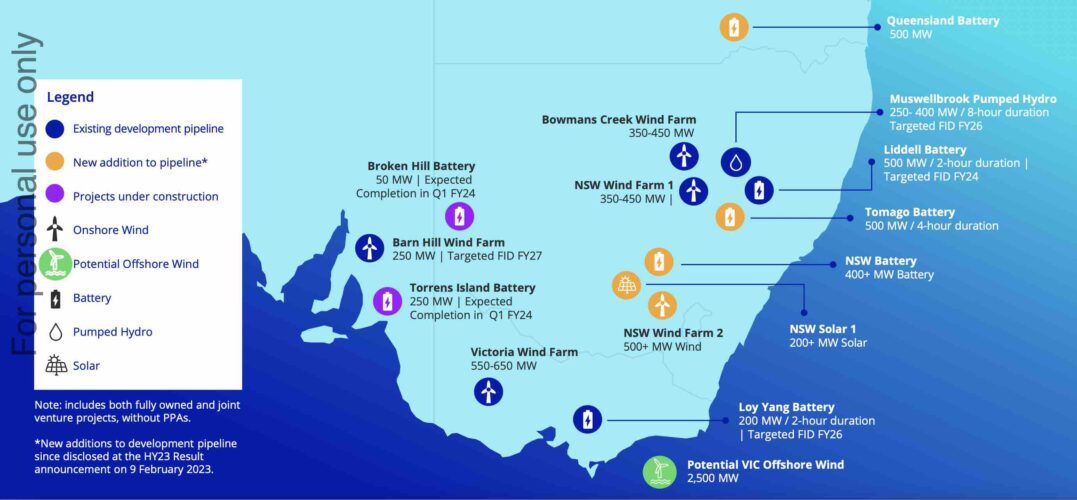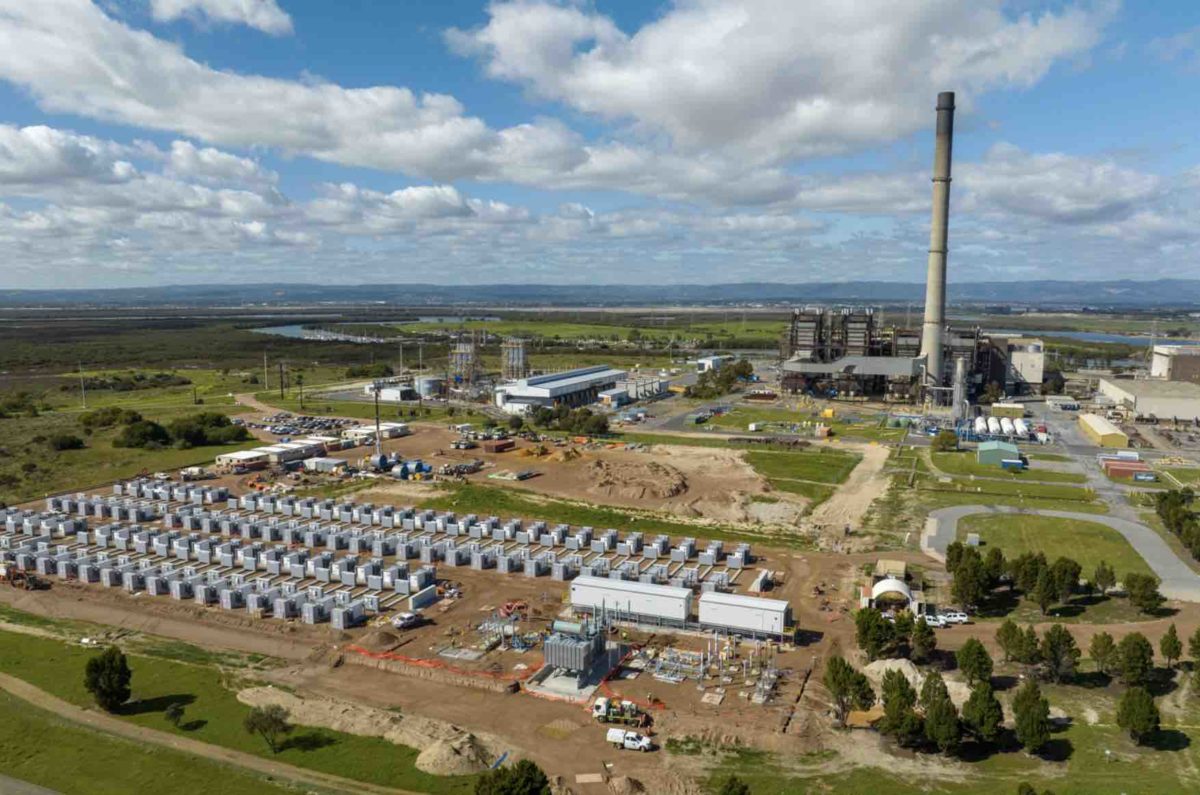Australia’s biggest coal generation company AGL Energy has added another three big batteries to its development pipeline, as it seeks to transform its energy portfolio ahead of the planned shutdown of its last two coal generators.
AGL says two new batteries – a 250MW, one hour battery at Torrens Island in South Australia and a 50MW, one hour battery at Broken Hill – are all but complete and should be in full operation in the next three months. The Torrens Island battery has already begun production.
A final investment decision on a potential 500MW, two hour big battery at the site of the Liddell coal plant that closed in April has also been brought forward to the end of this year.
CEO Damien Nicks says the company expects the first 250MW stage of the Liddell big battery will get some funding from the Australian Renewable Energy Agency. He said negotiations are well advanced.
AGL also reveals another three batteries have formally entered its development pipeline. These include a 500MW, four hour (2,000MWh) battery next to the Tomago smelter (one of the company’s biggest electricity customers), and two unidentified battery projects in Queensland (500MW) and NSW (400MW).

AGL plans to build or contract 6.3GW of new wind and solar capacity by 2035, and 5.9GW of storage capacity, with a focus on shorter duration storage (four hours or less) because that is where the greater value is for the investor and the market.
That observation is an important one for the Australian market, because it is yet more confirmation that building long duration storage (pumped hydro) is almost impossible for private investors because – as AGL nots – the capacity costs are higher and the returns are lower.
This has become evident in the NSW infrastructure plan, which now looks set to switch the funding of pumped hydro to the newly formed Energy Security Corporation, and in Queensland, where the commitment to giant pumped hydro projects is raising questions.
Chief operating office Markus Brokhof also noted that gas peakers are not even competing in the short term storage market, which is going to be dominated by battery storage. “Gas is much more valuable in the period of more than six hours.”
On Friday, AGL also announced it has signed a 15-year contract to take nearly half the output of the new 400MW Rye Park wind project near Yass in NSW, and its presentation flags a new 500MW wind project and a 200MW solar project in NSW.
However, its presentation shows no acceleration in its closure plans for the Bayswater and Loy Yang A coal generators, with Bayswater now given a timeline of between 2030 and 2033, and Loy Yang A holding out until 2035, by which time it will have to close if Victoria is to meet its legislated 95 per cent renewables target.
That will disappoint those who point out that all Australia’s coal capacity needs to be shuttered by 2030 to keep in line with a 1.5°C target, and possible too its biggest shareholder, the activist billionaire Mike-Cannon Brookes.
AGL’s plans for 12GW of new capacity and contracts by 2035 is less than the 14GW plans unveiled for the next decade by Origin Energy’s proposed new owner Brookfield.
Brookfield plans to spend $30 billion, while AGL is hoping to limit its balance sheet and capital commitments to less than $10 billion, mostly because most of its new wind and solar will be contracted.
It’s likely to want to have ownership of the firming assets, largely because they will be mostly based in the fossil fuel generation hubs that it intends to transform into clean energy and industrial precincts. It also expects that storage will deliver higher returns than wind and solar farms.
And yet this is despite AGL admitting that there will be some 25TWh of new demand from the shift to electrification it is trying to engage with as households dump their fossil fuel appliances and switch to EVs.
“The projected shift to electrification is expected to result in a gradual decline of gas demand,” says the company once known as the Australian Gas Light Co.
But nothing is happening too quickly. The AGL presentation reveal that – like other big energy utilities – it is making money out of the volatility in the market and its ability to lift costs to consumers.
AGL has upgraded the bottom end of its profit forecast range to $255 million in FY 2023 and to $580 million for FY 2024.
It credits this on “higher customer margins” – which basically means it is making more profits from its 4.3 million household and business consumers as the price of electricity is jacked up, and because it has reduced the number of outages at its ageing fossil fleet of coal and gas fired generators.
AGL also makes a lot of money during high wholesale prices because it costs very little to shovel brown coal into the neighbouring coal generator at Loy Yang A. Its share price jumped more than 10 per cent following the news of its profit boost.
The presentation notes that the company plans to install around 1.6GW of “orchestrated” rooftop solar PV assets from its building customers.
See also: AGL signs up to biggest wind project in NSW, says PPA costs have jumped










